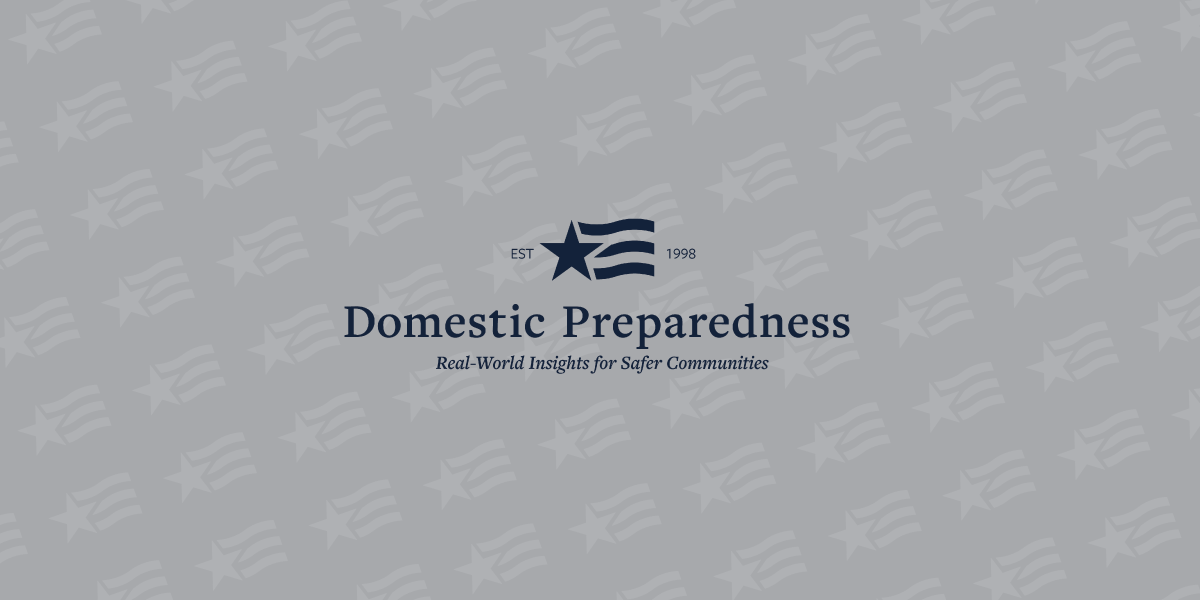- Articles, Critical Infrastructure, Emergency Management, Hazmat, Hospitals, Law Enforcement, Public Health, Science & Technology, Terrorism
- Greg Burel
SARS, H1N1, Ebola, Zika, and now the COVID-19 pandemic blindsided U.S. public health officials and the world at large. Although this is a newsworthy headline, it is not entirely accurate. Hyperbole may sell newspapers, but has ignored the great progress that has been made in national public health emergency preparedness. This narrative downplays the lessons learned, many which resulted in improvements in preparedness. Preparedness for well understood threats and expert knowledge of how to respond to those threats – from a scientific, medical, and logistics perspective – is already established. Addressing the many lurking yet unknown threats is more challenging.
For any threat, there is a need to harness and combine multiple important disciplines to shape and implement a response. For example, the unknown and novel threat – such as an emerging infectious disease (EID) – requires a precise response even when the EID threat is unpredictable and not well understood. Despite EID threats being inevitable, the shifting requirements in responding to such threats shed a critical light on the current response to the COVID-19 pandemic.
In 1999, the Strategic National Stockpile (SNS) was established to address preparedness and medical material response needs from feared terrorist actions arising from the potential impact of the Y2K computer bug. That threat, while sensationalized at that time, never truly materialized, thanks to much work by many information technology experts. The 1999 Health and Human Services (HHS) Anti-Bioterrorism Operating Initiative was the imperative behind the development of the National Pharmaceutical Stockpile’s advertised ability to respond within 12 hours to an unknown event. The early start saw $51 million appropriated and used to create a handful of Push Packages designed for delivery 12 hours after a decision is made to send to any U.S. location. Even today, these legacy Push Packages still exist for just that event.
Expanding Missions, but Not Funds
The preparedness imperative of today’s SNS remains, but the mission continues to expand with capabilities strengthened. An asset without an original charge to respond to an EID is now regularly in a role to support those responses. The SNS mission grows boundlessly and the SNS is viewed globally as the gold standard of public health emergency response. Its continued success in responding to a wide range of threats instills faith in the organization while continually expanding its mission. However, as is so often the case, expanding missions are not accompanied with expanding funds to accomplish the growing charge.
History has shown that new capabilities created for an immediate threat often decline after the event, despite the inevitability of another event in the future.
The nation is now challenged by a lack of long-term, ongoing investment in either stockpiling or otherwise creating capacity for immediate material acquisition such as personal protective equipment (PPE) to prevent the spread of infectious disease that might be encountered in a pandemic event. COVID-19 is not only dominating the news cycle but, for many, has changed daily life. Theoretically, that should then drive Congress to further fund the development of better pandemic preparedness in the SNS and across health and medical response agencies.
SNS early efforts in pandemic influenza preparedness focused partially on PPE for healthcare workers. Had those efforts been sustained with continuing funds, they would be useful in responding to COVID-19. Unfortunately, these purchases were funded by supplemental appropriations that were never included in the basic appropriations of the SNS. This is understandable. Important competing priorities for an organization housed outside the U.S. government’s primary agency for health and medical response made it difficult for SNS to see increased appropriations for this “insurance policy” against a future threat. Since transitioning to the HHS Office of the Assistant Secretary for Preparedness and Response (ASPR), the primary leader for the U.S. government’s health and medical response, there has been strong advocacy for the SNS to receive adequate preparedness funding for all hazards – including pandemic emerging disease threats. The long-term lack of investment in pandemic preparedness particularly is now of vital concern as much of the PPE required is manufactured in whole or in part in China. More is learned each day about the ongoing shortage of this material.
Emergency Appropriations vs. Continuing Investment
On 6 March 2020, the president signed into law a supplemental emergency appropriations bill not unlike that provided for pandemic influenza preparedness in the early 2000s. This appropriation will provide $8.3 billion in much needed supplemental funds to respond to COVID-19 and to build new stock of material. Although funding provided for the current response is important, the nation would have been in a better posture had the funding provided for pandemic influenza response been continued as part of SNS appropriations so the investment made would have been sustained. Continuing investment would have ensured product availability today to respond to COVID-19. Now, the government is trying to catch up while a panicked nation watches. Unfortunately, when the threat of COVID-19 has passed and the supplemental funding has been spent, the nation will go back to previous capabilities unless Congress acts to include these critical supplies in its regular appropriations. History has shown that new capabilities created in the face of an immediate threat often decline in the wake of the event – even though new EID threats will emerge or reemerge in the future.
Again and again, as experts try to forecast material needs based on known and anticipated threats, the constantly constrained available funds require trading off the full list of supplies needed for the SNS for some lesser negotiated position that cannot meet all requirements from the public health and national security perspectives. PPE is an excellent example of the challenges faced in those trade-offs. SNS holds PPE to protect healthcare workers in such an event. Although the PPE may keep disease from spreading to healthcare staff while other pharmaceutical interventions are developed, PPE on its own will not make someone who got sick better. Complicating this trade-off decision process is the manufacturing cycle for all the necessary materials. Manufacturing PPE requires available raw material and equipment to turn that raw material into, for example, masks. These masks and other materials are regularly sold on the commercial market, but the just-in-time supply process generally leaves no cushion of stocked PPE in hospitals. In fact, there is limited flexibility in any stock in any healthcare setting. Normally, material needed to take care of patients is delivered in increments to support 24-hour cycles of care. For example, the supplies needed to perform an elective surgery at 10 a.m. likely arrived at the hospital the night before the procedure.

What Congress Needs to Do Now
Pharmaceutical manufacturing is an entirely different and far more complex world. Not only do ingredients have to be sourced and assured to be safe and effective, those ingredients must be combined and finished under very strict manufacturing regulations to ensure they are safe and effective as medicines. Further, it is not generally possible to start and stop drug manufacturing “on the fly.” Manufacturing of this type must be continuous, or lines have to be tested and re-certified after certain idle periods. This is complex enough without considering biologic drugs that rely, for example, on continuing collection of plasma from humans or animals. Similarly, it does not consider the needs for bioreactors to continuously produce living organisms necessary for production.
In considering all the complicating factors and confounding decisions involved in federal procurement for the medical supply chain, one thing is imminently clear. There is now no more time to wait, to deliberate, or to put off funding a routine capability in the SNS and across federal agencies to acquire, sustain, and maintain capability to sufficiently respond to pandemic events. Congress must ensure that the SNS and the broader health response agencies have adequate funding for all stages of pandemic preparedness and response. This imperative must include funding to cover needs from basic personal protective equipment in the response to the development, procurement, and deployment of new specific medical interventions. In the supplemental funds delivered by Congress to fight the COVID-19 pandemic lies a critical opportunity – one the nation cannot afford to waste.

Greg Burel
Greg Burel is director of the Strategic National Stockpile, managed by the Department of Health and Human Services’ Assistant Secretary for Preparedness and Response. As head of the nation’s largest stockpile of medicines and supplies available for emergency use, he is a leading expert on medical supply chain management in the United States. With more than 35 years of civil service, he has risen through the ranks of the federal government, beginning his career at the Internal Revenue Service and serving in leadership roles in both the General Services Administration and the Federal Emergency Management Agency. In 2006, he assumed the helm of Strategic National Stockpile operations. He was awarded the Samuel J. Heyman Service to America Medal for Management Excellence and selected as a National Academy of Public Administration fellow in 2016.
- Greg Burelhttps://domprep.com/author/greg-burel
- Greg Burelhttps://domprep.com/author/greg-burel
- Greg Burelhttps://domprep.com/author/greg-burel
- Greg Burelhttps://domprep.com/author/greg-burel






